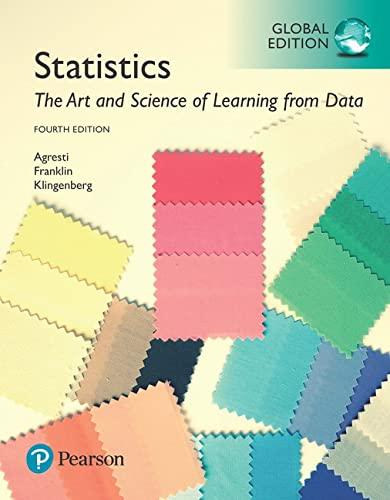11.23 Checking a roulette wheel Karl Pearson devised the chi-squared goodness-of-fit test partly to analyze data from...
Question:
11.23 Checking a roulette wheel Karl Pearson devised the chi-squared goodness-of-fit test partly to analyze data from an experiment to analyze whether a particular roulette wheel in Monte Carlo was fair, in the sense that each outcome was equally likely in a spin of the wheel.
For a given European roulette wheel with 37 pockets
(with numbers 0, 1, 2, …, 36), consider the null hypothesis that the wheel is fair.
a. For the null hypothesis, what is the probability for each pocket?
b. For an experiment with 3,700 spins of the roulette wheel, find the expected number of times each pocket is selected.
c. In the experiment, the 0 pocket occurred 110 times.
Show the contribution to the X2 statistic of the results for this pocket.
d. Comparing the observed and expected counts for all 37 pockets, we get X2 = 34.4 Specify the df value and indicate whether there is strong evidence that the roulette wheel is not balanced.
(Hint: Recall that the df value is the mean of the distribution.)
Step by Step Answer:

Statistics The Art And Science Of Learning From Data
ISBN: 9781292164878
4th Global Edition
Authors: Alan Agresti, Christine A. Franklin, Bernhard Klingenberg






